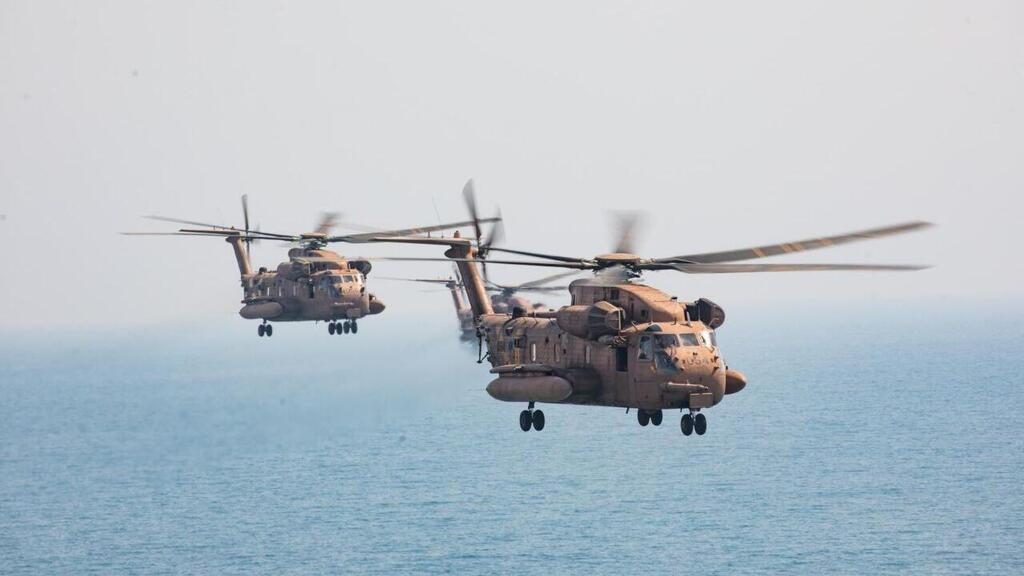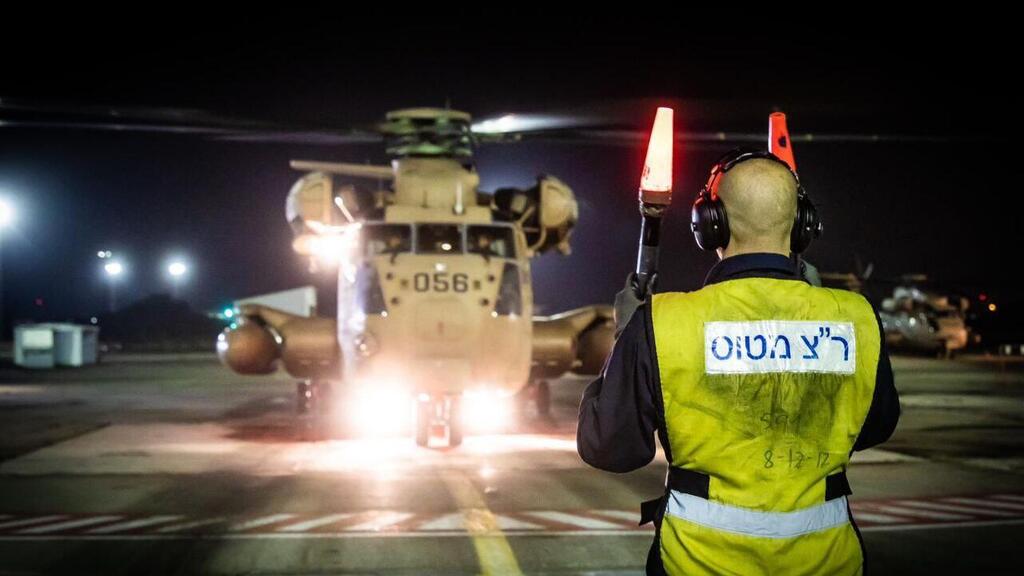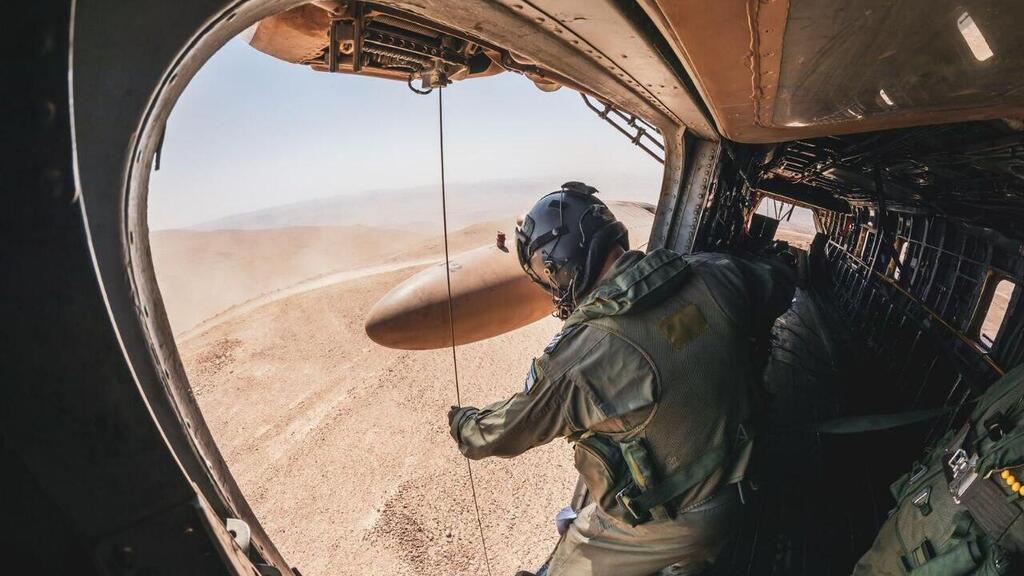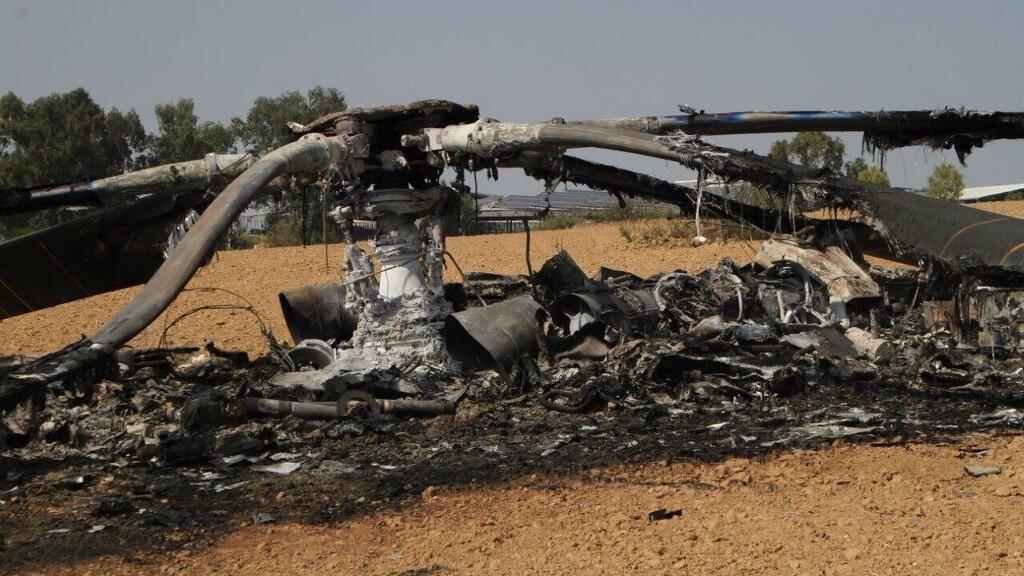Getting your Trinity Audio player ready...
During the war, Israeli helicopters flew for several hours towards a distant target in what was the longest operation since October 7. The operation was carried out by the IDF's veteran Yasur helicopters, whose operational capabilities were stretched to the limit by the Israeli Air Force (IAF) during the war.
a. On October 7, they were urgently dispatched to assist in the intense operations around Gaza. The workload was so overwhelming that airborne mechanics and pilots themselves helped load injured individuals from the battlefields.
In one instance, a pilot had to assist a child and her exhausted father onto the helicopter, exiting the cockpit to help. "We flew at low altitudes of 15-60 meters despite the danger, to locate casualties and support ground forces, while beneath us Hamas motorcycles crossed the fields," one pilot described.
The intense fighting in the early days of the war led to significant changes in the use of the Yasur helicopters. The number of soldiers the helicopter could carry was increased to about 35. The IAF reinstated a procedure, previously banned after the Second Lebanon War, allowing soldiers, particularly those from Unit 669 who are accustomed to flying in helicopters, to fire machine guns through the windows during flight if they spotted threats on the ground. This decision came after several helicopters were hit by small-arms fire from terrorists.
Additionally, the squadron modified the method for evacuating casualties, reducing the time needed to load injured individuals to just one minute, even during mass casualty events, and eliminating redundant medical personnel on the helicopter. So far, over 300 evacuations of injured soldiers from the battlefield to hospitals have been conducted during the war.
The Yasur helicopters were originally scheduled for decommissioning at the beginning of the decade, with plans to replace them with the new CH-53K model from Lockheed Martin-Sikorsky. However, political crises and the lack of a state budget delayed the deal, forcing the Air Force to extend the operational life of the helicopters.
"We monitor the flight duration of each helicopter down to the hour, the details of the chassis, and align this with combat needs," said an IAF official. "We must maintain operational readiness for the personnel, which cannot be fully achieved with simulators, so training on the Yasur helicopters continues. It takes six hours to prepare a Yasur for flight, compared to two hours for a Black Hawk and one hour for a fighter jet."
These helicopters, which arrived in Israel in the late 1960s directly from the Vietnam War, have seen extensive use. Since the tragic 1997 Israeli helicopter disaster, which resulted in the loss of two helicopters and their crew, the IDF has lost three more Yasurs, the most recent on October 7, due to terrorist rocket fire near Kibbutz Alumim.
The life-extending maintenance has somewhat limited their use but has never completely halted it. The IDF remains the only Western military still using this outdated model operationally. Maintaining these helicopters has become increasingly challenging, as spare parts are now sourced monthly from surplus U.S. military supplies.
Before October 7, the Israeli Air Force had already requested the development of an active missile defense system. In light of the war and the increased missile threats from the ground, it was decided to finally equip the helicopters with an interception system for added protection, especially with a focus on the northern front—Lebanon, which poses a greater threat than Gaza.
The new defense system, "BrightNite" by Elbit Systems, has already been installed on one helicopter, and more units are expected soon. This system is primarily effective against shoulder-fired missiles, but its development continues to protect against additional threats. It is essentially a miniaturized version of the "Flight Guard" system, a national project designed to protect civilian aircraft using laser and signal jamming to neutralize ground-based missile attacks.






